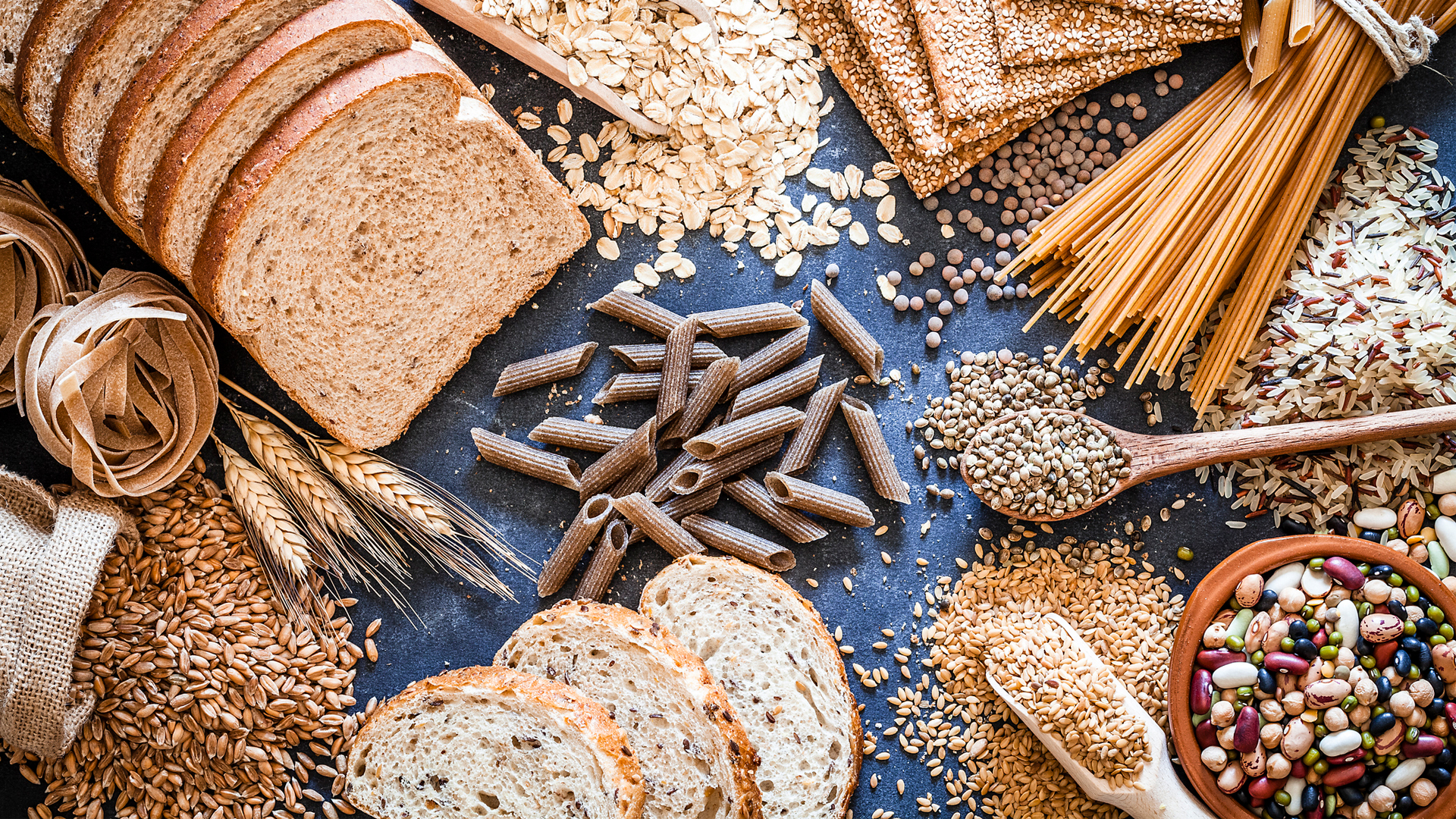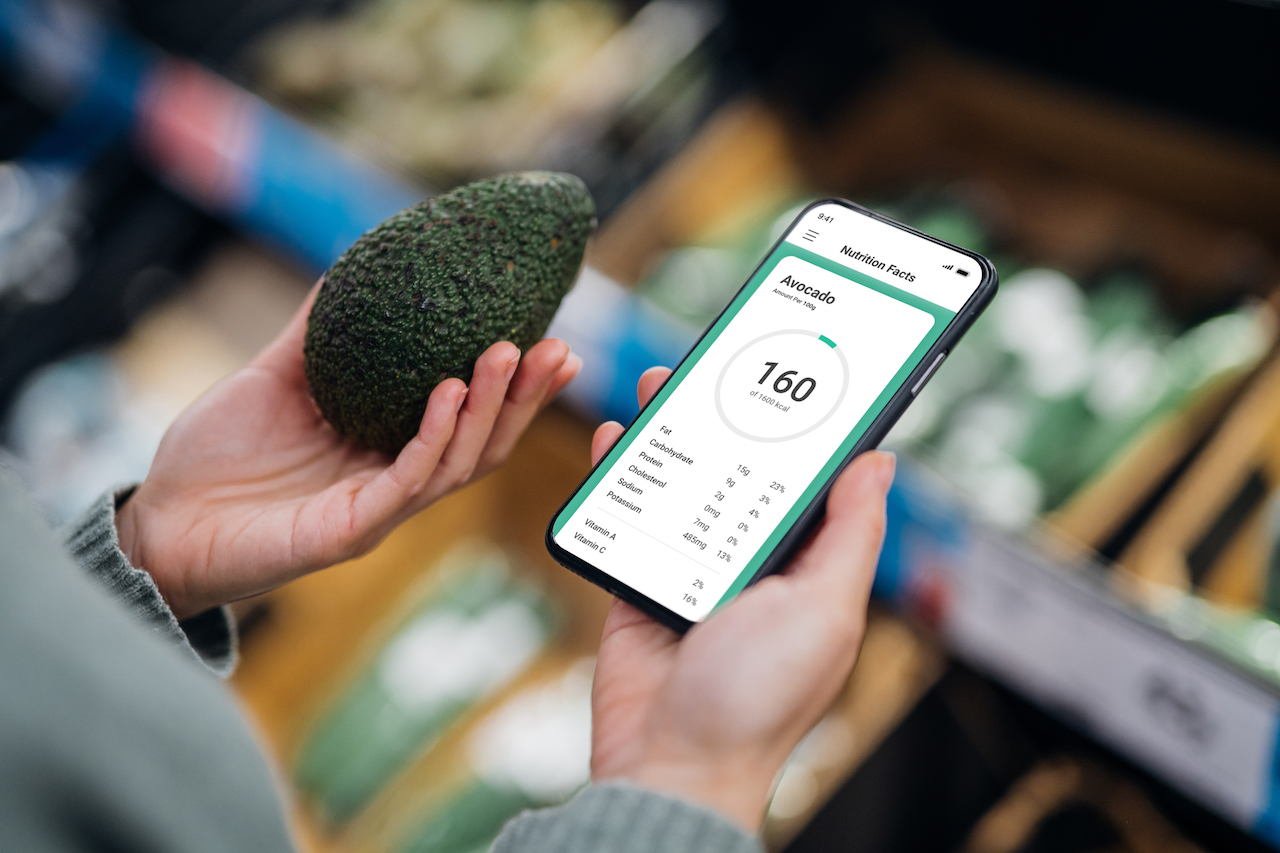How to track your macros
A step-by-step guide on how to track your macros, to optimize your diet, lose body fat and gain muscle

Knowing how to track your macros (short for ‘macronutrients’) can make a big difference to your fitness goals. Diet and physical activity are closely connected, and if you don’t pay enough attention to what you’re eating on a daily basis, you may struggle with losing weight or building muscle mass.
“Tracking macronutrients can be helpful in giving you a high-level view of your overall food intake,” says Dr Claire Shortt, nutritionist and lead scientist at FoodMarble. “It can sometimes be hard to make healthy dietary choices without first knowing what kind of foods you are eating, and in what quantity. For many of us, this would be near impossible without tracking our food. Even tracking for a certain time period is helpful.”
Although it may sound like a tedious and time-consuming task, it doesn’t have to be. There are a number of calorie counting apps and health tracking software that make it easier than ever to start tracking your macros. But how do you get started?
In this article, we’ll cover everything you need to know about counting your macros, and give you a step-by-step guide on how to effectively monitor your intakes of carbohydrates, proteins and fats. For healthy eating inspiration, try out our easy Mediterranean diet meal plan too.
What are macros?
‘Macro’ is short for macronutrient and there are three types of nutrients that fall into this category, providing you with most of your energy: protein, carbohydrates and fats.
“So when you’re counting your macros, you’re counting the grams of proteins, carbs or fat that you’re consuming”, explains Daniel Herman, founder of BioSynergy.
Carbohydrates
Carbohydrates is an umbrella term used to describe all the molecules consisting of carbon, hydrogen and oxygen atoms that our bodies use as the main source of fuel. There are, broadly speaking, three types of carbohydrates – sugars, starches and dietary fiber. Carbohydrates can also be divided into simple and complex (sometimes referred to as ‘good’ and ‘bad’ carbohydrates) based on the different effects they may have on our blood sugar levels.
Sugars and starches are predominantly used as fuel to power up your movement and for the functioning of your internal organs. One gram of these carbohydrates equates to four calories. On the other hand, dietary fiber moves through the digestive system largely intact and its main role is to stimulate your bowel movements, ease digestion and feed the good bacteria in your gut. Since they’re not absorbed in the intestines, they do not provide much, if any, calorific value to your body and as such they tend to be excluded from macronutrient tracking.

Protein
Protein is used in the body to grow new tissues, heal wounds and produce a host of important compounds, such as enzymes, hormones or neurotransmitters. Eating adequate amounts of this macronutrient also helps with energy levels, appetite control and weight management. One gram of protein equates to four calories.
- Related: The best vegan sources of protein
Fats
Dietary fat plays many different roles in our bodies: it stores energy, insulates us from cold temperatures and cushions our vital organs. It also help to create a host of important hormones and bioactive compounds that impact our metabolism and reproductive health. Since fat molecules are densely packed and tend to be relatively bigger than other macronutrients, it takes a lot of energy to break them down and digest them. That’s why one gram of dietary fats equates to nine calories.
Fats are largely divided into two groups – saturated and unsaturated. Saturated fats are solid at room temperatures (lard, for example). They predominantly come from animal-based sources. Unsaturated fats tend to come in liquid form (cooking oils, for example). They are mostly found in fish and plant-based sources, such as avocados, nuts and seeds. Saturated and unsaturated fats are commonly referred to as ‘bad’ and ‘good’ fats based on their alleged effect on our cardiovascular system, but recent years have seen a rise in research studies challenging this point of view.
- Related: How body fat is calculated

How to count your macros
Trying to count your macros? Here's the best way to do it:
1. Figure out your calorie needs
Figuring out your calorie needs is the first step to calculating and tracking your macros. The USDA regularly publishes estimated energy requirements for different individuals, but these are rough assessments intended for general use. In reality, everyone has unique energy requirements.
The exact amount of calories a day you need to sustain your bodyweight and maintain healthy living functions will depend on several factors, such as sex, age, weight, height and physical activity levels. You can use equations that have been developed to manually calculate your energy requirements, such as the Harris-Benedict formula. However, it’s much easier and faster to use one of the online calorie calculators or calorie counting apps that does it for you.
The number you will have calculated is your maintenance level – the number of calories you need to sustain your current body weight. If you want to lose weight, you will have to consistently stay below that value, in the so-called ‘calorie deficit’ state. Although it may be tempting to drastically slash your calories to speed up weight loss, this strategy may be counterproductive or even dangerous for your health in the long term. General advice is to lower your maintenance calorie level by around 500 kcal per day, which should result in a fairly sustainable weight loss of up to a pound a week.
On the other hand, if you want to gain weight or build muscle, you will have to add more calories on top of your maintenance level. Building muscle is a very energy-consuming process and your body will not do it effectively if you’re not eating enough. General advice is to increase your calorie intake by approximately 500 kcal per day.

2. Work out your macro ratios
Once you know your calorie requirements, you can work out your macronutrient ratios. According to USDA guidelines, these are the acceptable macronutrient distribution ranges (AMDR):
- 45–65% of your daily calories should come from carbs
- 20–35% of your daily calories should come from fats
- 10–35% of your daily calories should come from protein
So, for example, if your calorie requirement is 2000 kcal a day, 900-1300 of these calories should come from carbohydrates (225-325 grams), 400-700 kcal should come from fats (45-78 grams) and 200-700 kcal should come from protein (50-175 grams).
“We all need a certain combination of these nutrients to maintain our health and bodily function,” says Shortt. “This ratio will depend on the individual goals and health needs. For example, endurance athletes will need more carbohydrates than weight lifting athletes, who might look for a higher relative percentage of protein intake overall.”
She adds: “Pay attention to how you feel, are you feeling hungry often or less energetic? This might suggest your daily target needs to be adjusted.”
3. Tracking your macros
The easiest and most convenient way to track your macros is through a calorie counting app.
“It might not come naturally to you, but over time it can become a daily habit and can help you become more mindful of your food choices,” says Shortt.
The vast majority of calorie counting apps are regularly updated to include recently released food items. Many come with barcode scanners too, or the option to save your recipes. Track your diet daily and always try to include everything you eat and drink, except water and unsweetened tea or coffee. Many people forget to put things like small snacks or alcoholic beverages into their daily tallies, but these little discrepancies may add up overtime and ultimately affect your fitness goals.

Are there any benefits to tracking your macros?
Tracking your macros in a consistent and accurate manner can come with a host of benefits. First and foremost, it can be an invaluable tool to help you achieve your fitness goals faster and more efficiently. But even if you don’t have a specific goal in mind, this strategy can generally improve the quality of your diet.
“Keeping track of your macros can help you to make, or plan to make, smart, healthy food choices”, says Daniel Herman. “It may help you to understand where your calories are coming from and how they affect your body. It also helps you to understand that not all calories are created equal.”
“Macro counting is great because it’s not a one-size-fits-all plan. It’s commonly referred to as “flexible dieting” since you’re eating real foods without really depriving your body. Technically there are no ‘cheat foods’ when you’re counting macros, it just means you have to move some macros around to make it fit.”

Yet there could also be downsides. Hitting your macros does not automatically mean that your diet is healthier. There’s a risk that when you focus entirely on your protein, carbohydrate and fat intake, you may lose sight of different, equally important aspects of nutrition, such as your micronutrient or phytonutrient consumption.
“Whilst there are many benefits to tracking your macronutrients, it’s important to understand that food is also made up of many micronutrients, like vitamins and minerals,” says Shortt. “It is important to consider how your food choices impact your gut microbiome and not just consider macros or calories.”
In order to continuously progress with your goals, you may also have to keep adjusting your values.
“As you progress, you’ll have to continue to adjust your macros based on your body weight and goals,” says Herman. “But the more you track your diet, the more you understand your body’s needs and the better you get at it. It’s definitely trying this strategy out, particularly if you feel stuck with your health and fitness goals.”
With any health and fitness goals, particularly if they’re related to pregnancy, breastfeeding, chronic condition management or recovery from medical procedures, it’s best to consult a dietician or medical professional first.
Sign up for the Live Science daily newsletter now
Get the world’s most fascinating discoveries delivered straight to your inbox.

Anna Gora is a health writer at Live Science, having previously worked across Coach, Fit&Well, T3, TechRadar and Tom's Guide. She is a certified personal trainer, nutritionist and health coach with nearly 10 years of professional experience. Anna holds a Bachelor's degree in Nutrition from the Warsaw University of Life Sciences, a Master’s degree in Nutrition, Physical Activity & Public Health from the University of Bristol, as well as various health coaching certificates. She is passionate about empowering people to live a healthy lifestyle and promoting the benefits of a plant-based diet.










